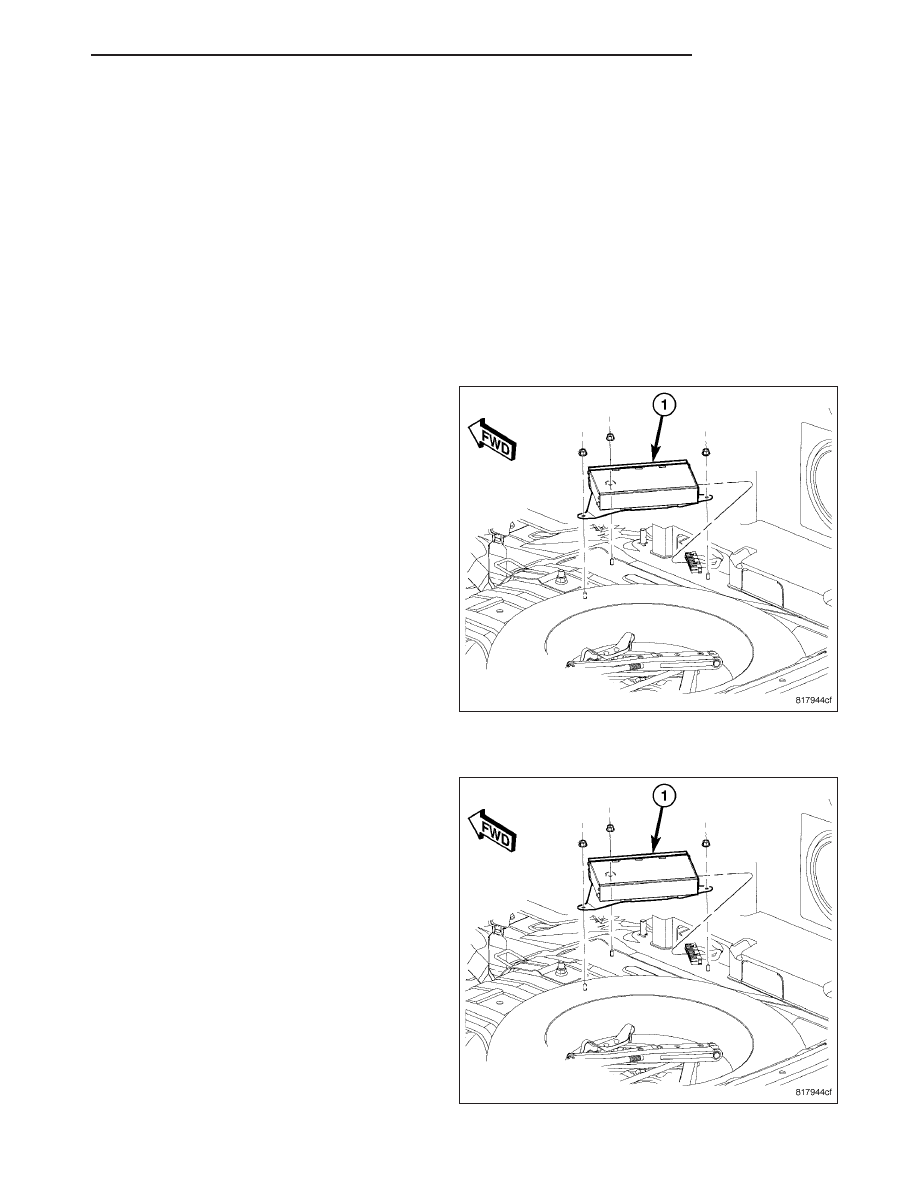Dodge Caliber. Manual - part 213

AMPLIFIER
DESCRIPTION
The optional premium speaker system includes a separate audio power amplifier. The amplifier is located on the
floor behind the spare tire in the trunk.
OPERATION
The power amplifier electronically increases the frequency response of the normal audio signal output from the radio
amplifier in order to improve the acoustic performance of the speakers. On vehicles equipped with an amplifier, the
amplifier section of the radio becomes a pre-amplifier.
The amplifier receives audio signal inputs for speaker channels from the radio, then sends amplified audio outputs
with dedicated feed and return circuits to the individual speakers.
REMOVAL
1. Disconnect and isolate the battery negative cable.
2. Remove the retaining fasteners.
3. Disconnect the wire harness connector.
4. Remove the amplifier (1).
INSTALLATION
1. Install amplifier (1).
2. Install the mounting fasteners.
3. Connect wire harness connector to amplifier.
4. Connect battery negative cable.
PM
AUDIO
8A - 125